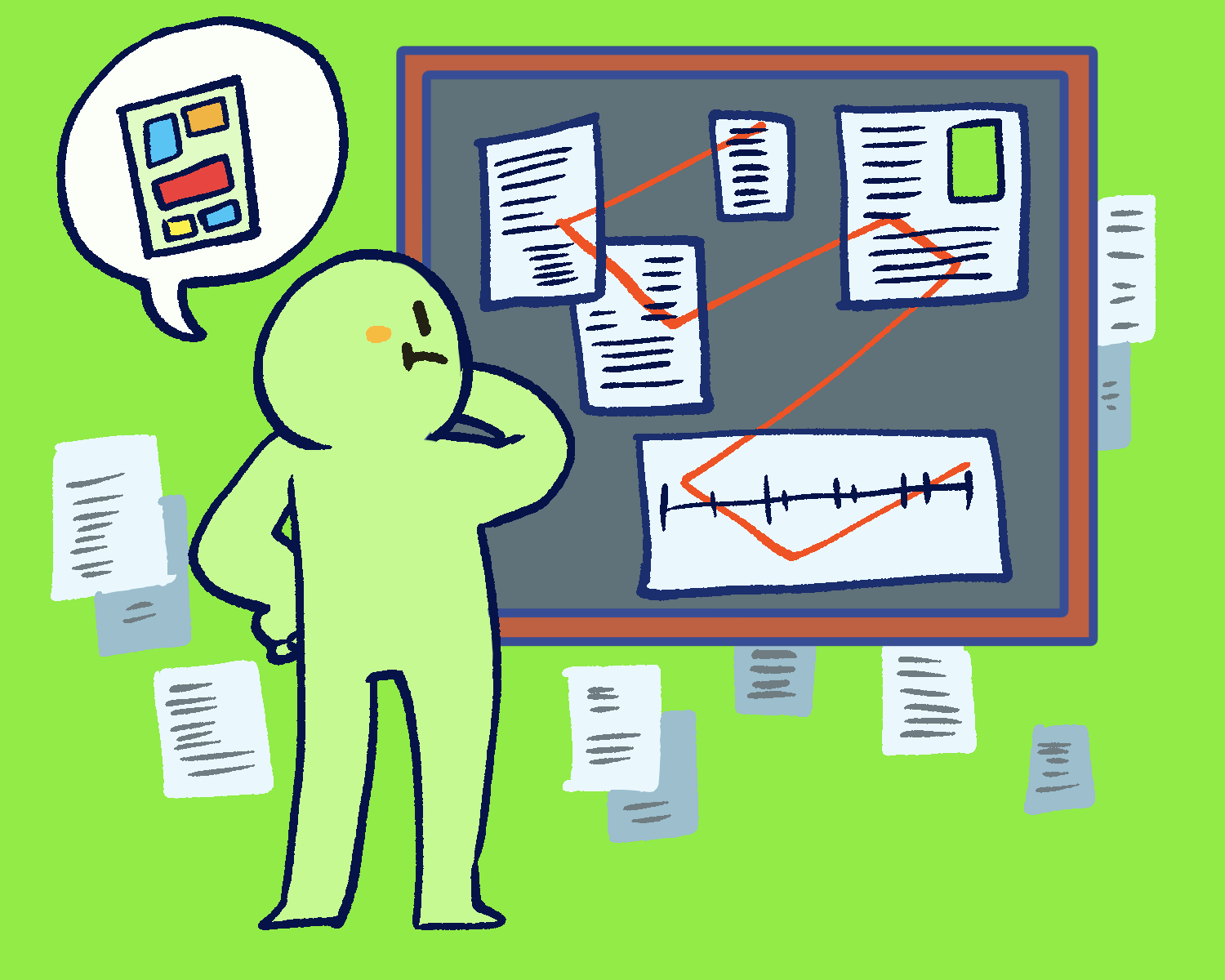Outlining

Outlining is a great tool for webcomic creators to create a road map quickly and help you get to the final version of your story. Writing out a loose list of the series of plot points you want visit helps you plan everything out by identifying the scenes you might (and might not!) need.
Outlines can take many forms and be revisited on an ongoing basis as you create your comic. Here are some tips on approaching them!
Starting Your Outline
Start vague. Your first pass is to just
write down every idea, however loose and half-formed. You can develop it with more details later, and sometimes it’s easier to figure out how exactly things go down once you’ve got your initial set up in place. (You can also sketch things quickly if you are more visually-oriented and know you’re going get overwhelmed by a big long list! Experiment to find a technique that works best for your brain!)
Take as many passes as needed. Break things down into smaller, manageable steps and revisit in multiple sessions.
Take your time to really think about if something is missing or doesn’t make sense. Drawing pages you don’t need can make getting your comic out into the world take even longer, and the work you do at the beginning can prevent some of that.
It doesn’t have to be a permanent to-do list. Some people feel a lot of relief having a full travel itinerary set in stone to know exactly what to do, but others find it very stressful feeling like one document you write at the beginning will determine the course of things forever. Flexibility in both cases is important. The purpose of an outline is to give you direction, but it’s also okay to change your mind if you really want a different approach!

Revisiting Your Outline As You Go
Webcomics can be a years-long endeavor, and many creators outgrow their
initial ideas, think of better ones along the way, or simply generate TOO MANY ideas for one person to handle in a reasonable amount of time. This is the normal process of drafting, and it’s good to acknowledge that outlines are not set in stone. You do NOT have to draw every scene you originally thought was going to be in your story. Pinning yourself to a lot of work that you don’t love can also lead to burnout, so make sure you revisit your outline often and recalculate your road map as you get closer to each point on it!
A few questions to ask yourself as you revisit the scenes in your outline:
- Does this scene advance the plot?
- Does this scene relate to the relevant themes present in other scenes or chapters around it? Will the audience be confused because we’ve jumped between two very different scenes too quickly, or do I need to add some pages to make that transition clearer?
- Is this scene going to be fun for me to make and for the audience to read? Can I remove some pages to make it shorter (or cut it entirely)?
- Is this the right place for the character to be acting this way? Should it be saved for a side story or bonus content?
These questions can help you cut scenes that don’t advance the plot in the way you want, cut/clarify scenes that won’t be very much fun to draw, or be confusing/boring to read. They can also inspire you to think of a more creative way to get from Point A to Point B that you hadn’t considered.
Outlines are a handy tool to keep us on track! Make the most of them to give your webcomic’s narrative intention, impact, and keep your focus on the elements most important to you!
